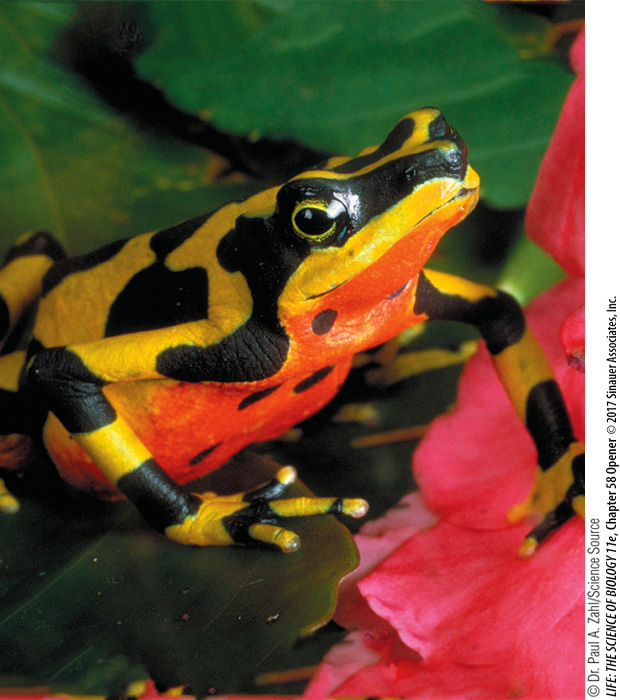Chapter Introduction
1249
58
key concepts
58.1
Human Activities Are Changing the Biosphere, Resulting in Biodiversity Loss
58.2
Most Biodiversity Loss to Date Is Caused by Habitat Loss and Degradation
58.3
Protecting Biodiversity Requires Conservation and Management Strategies
A Changing Biosphere

investigating life
Fatal Fungus Final Fate for Frogs?
Most of us have at some point in our life encountered a frog in a local pond or park. Maybe more than almost any other wild animals, amphibians are commonly encountered by human beings. But since the late 1980s, ecologists have documented a sharp global decline in amphibian species—
The decline has been particularly worrisome to scientists for a few key reasons: the sudden and global nature of the decline, the undisturbed nature of the areas where some the declines have occurred (for example, mountainous rainforest preserves in Costa Rica, where 40% of the amphibians have become extinct), and the reputation of amphibians as “biological indicators” of environmental conditions. Amphibians have permeable skin, live their lives in water and on land, and typically do not move long distances, factors that make them particularly susceptible to changes in their immediate environment. The IUCN study showed that most amphibian declines were caused by habitat loss, habitat degradation, and overexploitation, but for 48 percent of the rapidly declining species, there was no clear explanation. What factors might be contributing to the rapid decline of these species?
Over the last two decades, a highly lethal and infectious skin disease called chytridiomycosis, caused by a fungal pathogen (Batrachochytrium dendrobatidis), has been linked to mass mortalities of amphibians, especially in the regions where amphibian declines have been most dramatic. The disease was first discovered in 1993 in dead frogs in Australia and then seemed to appear suddenly in the Americas, Africa, Europe, and New Zealand. However, it is not clear how or why the fungal disease has emerged as a threat, and whether humans have contributed to its spread. An increasing number of studies are looking for reasons why this deadly disease has emerged and how it might be prevented.
Is the most recent dramatic decline of amphibians the result of a novel fungal pathogen, and if so, what can be done about it?